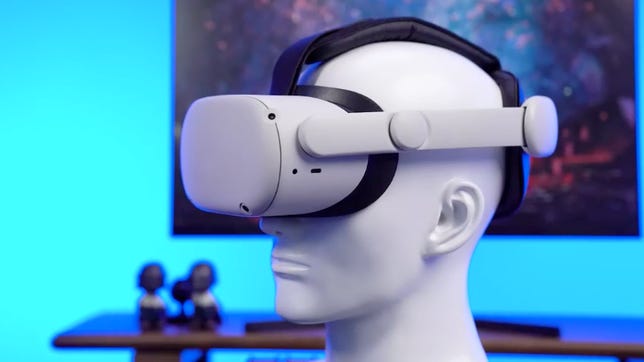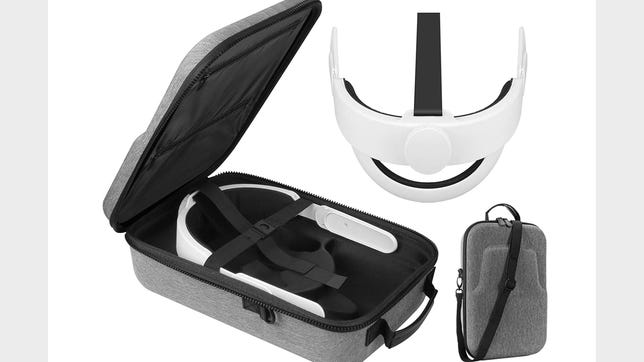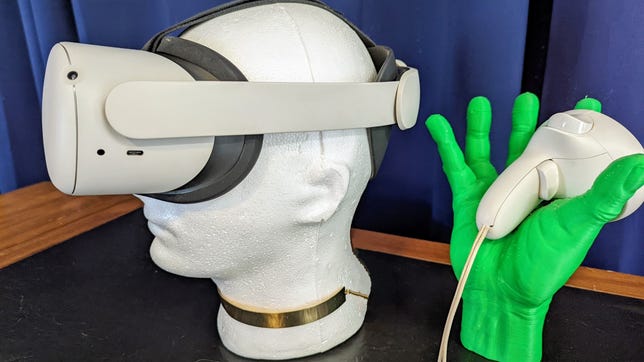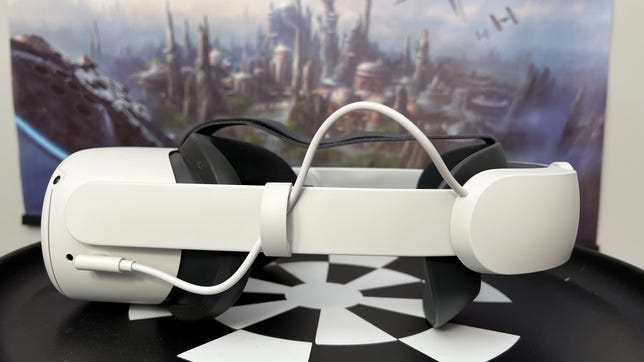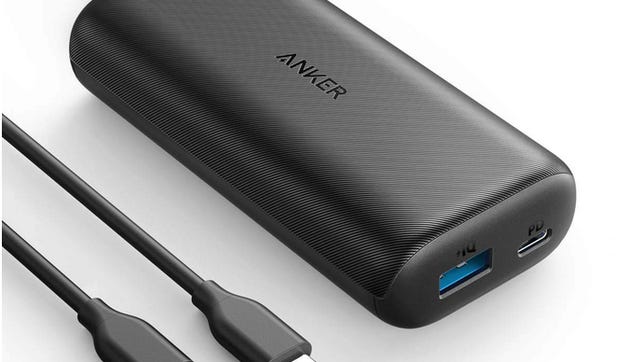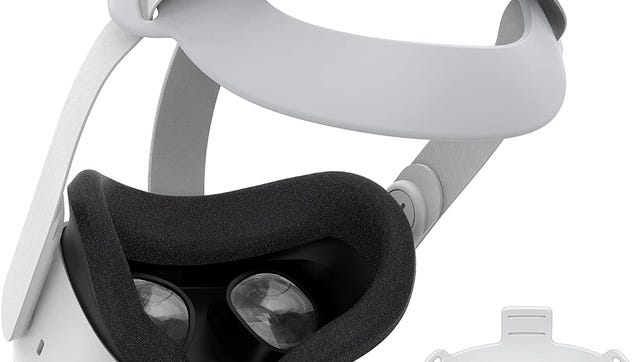Technologies
Tighten Up Your VR Game With the Best Head Straps for Quest 2
Spending hours in the virtual world? Make your VR headset more comfortable with one of these head straps.

Virtual reality is fast becoming the next big space in video games. The Meta Quest 2 is the current leader among the best VR headsets that don’t require a PC to run — though the PSVR2 has just released as competition— but it does have issues (not least a price hike). My biggest gripe is the Quest 2’s head strap. It’s aggressively average, which means it can and should be replaced with something more pleasant to use for long periods of time.
The best head straps have plenty of support around the back of your head, as well as firm fittings to the front. In order to test out these Quest 2 head straps, I spent a lot of time playing in VR. It’s not easy playing games for a living, but I endured it for you. Here’s a list of my favorites.
James Bricknell/CNET
A new version of this headset was recently released with a new ratchet on the back and a more comfortable front shape. The extra comfort now makes this my go-to head strap.
One of the most important parts of a head strap is the padding, as it keeps your head secure while maintaining a good comfort level. This head strap from Yoges took that importance onboard and went all-in on making sure your head is padded everywhere. The strap even has extra pads that offer a counter to the pull from the back as the ratchet is tightened.
For long-term use, the Yoges offers one of the most comfortable experiences I’ve had so far. My only gripe is the center strap. It’s a little too short for my head, so it doesn’t feel as secure across the top.
Kiwi
The Kiwi head strap is a great budget alternative to the Elite strap, with a few nice editions that make it stand out from the competition. My son loves using this for long Beat Saber sessions, so it’s a firm favorite in our house.
Often when you’re wearing glasses with VR, the headset can often be uncomfortable to remove. I’ve banged my glasses and knocked them off a few times. The Kiwi head strap can tilt at an extreme angle, allowing you to put the headset on without knocking it into your face. It’s a far more comfortable experience than the Elite strap.
Yoges
I am constantly impressed with the comfort of the Yoges straps. The padding all around makes it incredibly secure and the added weight of the battery helps to balance the front screen. The battery is only 5,000mAh but that’s enough to fully charge the Quest 2 about one and a half times, so should keep you playing for a good long while.
Amazon
When I was looking to upgrade to an «elite» head strap for my virtual reality experience, I didn’t necessarily want to spend the cash for the official Oculus Elite version. I was looking for an Oculus Quest bundle that combined accessories, and I found this one from Esimen.
It includes a nice carrying case, which is what sold me on this. The strap is as good as others on this list, but the case is a bonus that the others lack.
James Bricknell/CNET
I bought the Elite strap as a bundle with my Oculus Quest 2 at launch, and while some people have suffered from breakages in that first batch, mine has performed admirably. This latest run of the Elite strap has removed the flaw altogether, so if you want to have a fully branded head strap, this is your best choice.
I’ve used my Elite strap for more hours than I count. From playing sweaty and energetic games like Supernatural to sitting in VR for an eight-hour workday, the only time the Elite strap felt uncomfortable was when I tightened it too much. If you can get it dialed in, it’s great.
Colohas via Amazon
One of the best things about a wireless VR headset like the Quest 2 is sharing it with others. Having brought my headset to a number of parties, I can say that hearing a disappointed «aww, OK» when you tell someone they can’t play because the battery died is a real bummer. I’ve used third-party battery packs that clip to your belt in the past to keep other headsets going, but the Oculus-made battery strap for the Quest 2 is something entirely different.
For starters, the added weight of the battery strap is a good thing — because it’s in the back of the headset, it causes a balancing effect that removes pressure from your nose and forehead. The battery also adds 2 hours of gameplay, and you never have to take it off. If you want to charge the headset, you just charge the battery. The power will flow through to both with no noticeable performance differences. It’s such a joy to use that I genuinely can’t imagine using a Quest 2 without one at this point.
Helpful head strap accessories
Having a better head strap is going to improve your VR experience, but there are also ways to improve your new head strap that will make it even better than that. Here are some of our favorite add-ons.
Anker
I’ve used Anker battery banks for my phones for years now, so it makes sense that I’d favor them for my Oculus, too. You could just put it in your pocket and attach the cable, but it works much better when connected to your head strap in any number of ways. I’ve even used velcro.
The bank isn’t too heavy, but it has enough bulk to help offset the Quest 2 headset and plenty of power to top up your Quest 2.
Amazon
While I think it is a better idea to buy a complete head strap replacement, it can cost more than you might have. After all, the headset wasn’t cheap in the first place. This cool little add-on from Kiwi adds a halo ring to the existing head strap to increase your comfort.
Adding a halo to the back of your head distributes the weight more evenly and makes it much more comfortable over long periods.
What should you look for in a head strap?
There are a few essential things to look at when choosing a head strap:
- A good halo that sits comfortably around the back of your head will help keep some of the weight away from your neck, making the Quest 2 feel lighter than it is.
- Padding is essential. Your skull has minimal padding; that padding needs to come from the head strap, not you.
- A ratchet to tighten up the Quest 2 is helpful as well. You don’t always want the head strap to be as tight as possible, but you need it to stay at the right tightness despite your jumping around.
- Lastly, it would be best if you had a strap that can twist but not break. You’ll be putting the head strap through the wringer, so the side pieces need to hold up to that.
Does the Quest 2 Elite strap still break?
While there are still isolated reports of breakages, the issue that plagued the Elite straps seems to have abated. Most of the issues we see now are from misuse as opposed to regular wear and tear. Our last bullet point on what you should look for exists because of this issue, so make sure whatever strap you choose has good reviews and doesn’t break regularly.
Technologies
The New Year Will Kick Off With a Supermoon. Here’s When to See It
January’s Wolf Moon will be the final of four consecutive supermoons.

Supermoons tend to come in packs, and Earth has just experienced three of them in a row, dating back to October. The final supermoon of this sequence is happening on Jan. 3, and it also happens to be the first supermoon of 2026. Skygazers will want to catch this one, since the next one won’t occur until next November.
Don’t miss any of our unbiased tech content and lab-based reviews. Add CNET as a preferred Google source.
The moon tends to spend three to four months at a time in perigee, a fancy term that means it’s as close to Earth as its elliptical orbit will allow. During this time, humans refer to full moons as a supermoon. Since the moon is physically closer to Earth than it normally is, a full moon appears brighter and larger in the sky.
The difference can be a moon that is up to 14% bigger and 30% brighter than a micromoon, which occurs when the moon is at apogee, or the furthest point away from Earth. That brightness is the real differentiator, as a supermoon is bright enough to light up your backyard, especially if there is snow on the ground.
The odds of this are pretty good, as it is expected to snow in a few parts of the US between Christmas Day and New Year’s Eve.
To see the moon at its brightest, you’ll want to stay up late on Jan. 2 or wake up very early on Jan. 3. According to The Farmer’s Almanac, January’s supermoon will rise from the eastern horizon and streak across the sky to settle in the west around sunrise. The moon will reach peak illumination at 5:03 a.m. ET. It should still be dark outside for the entire US during this time, so everyone will have a chance to see it.
If you can’t due to weather or other engagements, the Wolf Moon will be over 90% full from Dec. 31 through Jan. 5, which gives you almost a week at near-maximum illumination.
Since the moon is the largest and brightest object in the night sky, you also won’t need any special magnification devices to see it. However, a good pair of binoculars or a telescope makes the moon’s surface details easier to see, and helps photographers take some impressive moon shots.
The full moon in January is commonly called the Wolf Moon, and it’s due to increased activity from wolves during this time. Not only does January mark the beginning of the wolf’s winter mating season, but wolves are also typically more active during the dusk and dawn hours, and dusk happens pretty early in the day, right after the winter solstice. In the old days, this meant that people were much more likely to see a wolf or hear wolves howling during January.
Technologies
The FCC’s Foreign Drone Ban Is Bad News for Anyone Who Wants a DJI Device
The US government is making good on an anticipated ban on the import of foreign-made drones, including those from the world’s top seller.
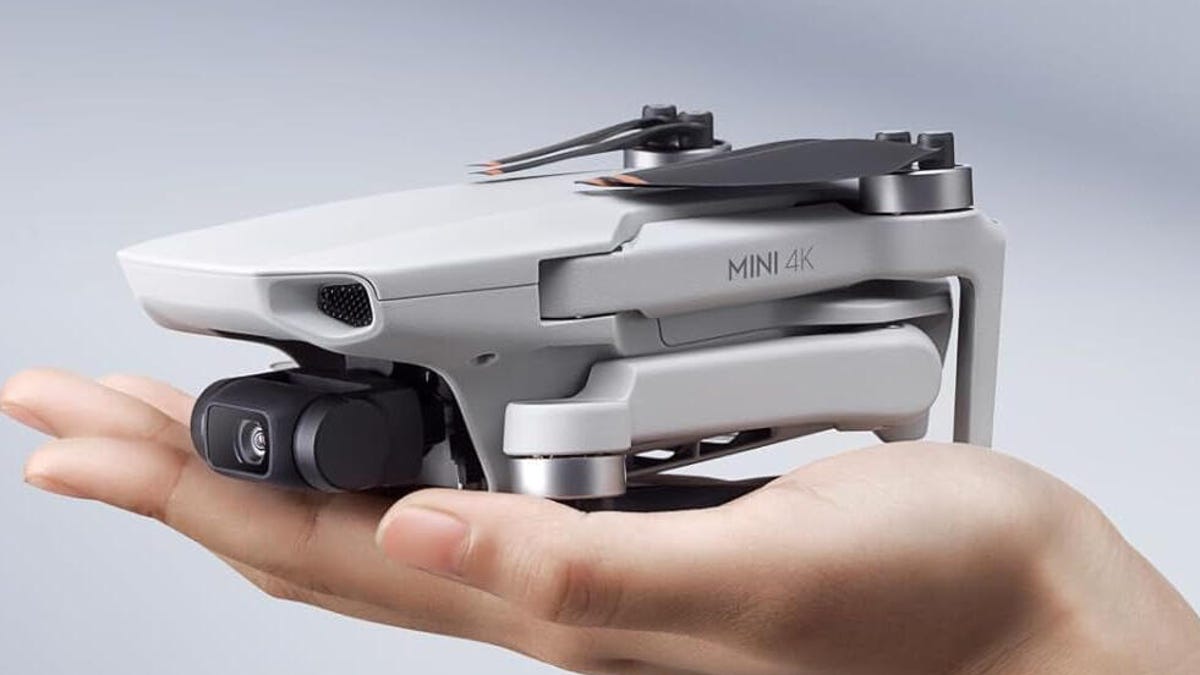
If a DJI drone was on your list to buy going into 2026, you might want to act quickly. The Federal Communications Commission has made good on an anticipated ban on the import of foreign-made drones, including those made by DJI, the world’s top seller of the flying devices.
The FCC on Monday added uncrewed aircraft systems and their components that are produced in a foreign country to its Covered List, a record of gear and services deemed to «pose an unacceptable risk to the national security of the US.»
According to the FCC’s public notice, that includes but isn’t limited to data transmission devices, flight controllers, sensors and cameras, batteries, motors and other drone components.
Don’t miss any of our unbiased tech content and lab-based reviews. Add CNET as a preferred Google source.
In late October, the agency voted 3-0 to «close loopholes» that allow tech deemed a «national security risk» to be sold in the US. In plain English, the US government cleared the path to give DJI the same treatment it gave Chinese phone-maker Huawei, effectively banning its products from the American market.
In a statement, DJI said it was disappointed by the decision. «While DJI was not singled out, no information has been released regarding what information was used by the Executive Branch in reaching its determination,» a spokesperson said. «Concerns about DJI’s data security have not been grounded in evidence and instead reflect protectionism, contrary to the principles of an open market.»
DJI said it remains committed to the US market and that it’s possible future products could be cleared for launch here at the discretion of the Department of Defense and Department of Homeland Security.
Drones already in the hands of US consumers aren’t impacted: «This action does not affect any previously-purchased drone. Consumers can continue to use any drone they have already lawfully purchased or acquired,» the FCC said in a fact sheet about the change.
In its announcement, the government cited upcoming high-profile events including 2026’s FIFA World Cup and the 2028 Los Angeles Summer Olympics as mass-gathering events that could be put at risk by drones.
«The federal government is taking additional actions to safeguard Americans and restore American airspace sovereignty,» the FCC said.
The FCC has also been considering a separate ban on TP-Link routers, but that was not included in this December update to its Covered List.
DJI asked for a security audit before any ban
In October, DJI told CNET that the FCC appeared to be making its decision «without any evidence of wrongdoing or the right to appeal.»
Adam Welsh, head of global policy at DJI, said the company has repeatedly said it would be open to audit, but that «more than 10 months have now passed with no sign that the process has begun.»
«The US government has every right to strengthen national security measures, but this must go hand in hand with due process, fairness, and transparency,» Welsh said at the time.
Will DJI drone owners need to give them up?
Because the ban applies to new sales, not drones that have already been sold, a DJI drone you already own is still be legal to use — at least under current rules.
Government agencies, however, were already prohibited from purchasing or using drones from Chinese companies, including DJI.
DJI’s drones consistently rank high in their product category. In January, they dominated CNET’s list of best drones for 2025. But some of the company’s newest products, such as the DJI Mavic 4 Pro, haven’t been available for sale in the United States.
Even before the policy change, some DJI products were hard to find. The website UAV Coach has posted a guide to the bans and reports that, due to inventory issues, most DJI drone models were sold out at retailers.
Technologies
AT&T Just Revealed Which Holiday Has the Most Calls. And No, It’s Not Christmas.
You might be able to guess the biggest texting day of the year, but the Holiday with the most phone calls gave me chills.

The holidays are a time for connecting with friends and family, either by gathering in person or checking in remotely. So, naturally, you might think phone calls would be at their highest during the festive stretch at the end of the year. But according to new figures shared with CNET by AT&T, another holiday got the highest number of calls in 2025. Which one?
The answer might give you chills: AT&T’s subscribers conjured up around 651 million phone calls on… Halloween. The company shared no other data besides the massive number, leading me to wonder why the spooky season inspired so many calls. Lost trick-or-treaters calling their parents for rides? People in costumes at parties accidentally butt-dialing their friends? Poltergeists pilfering people’s phones? Only the spirits truly know.
Despite that one-day call volume, texting is vastly more popular than phone calls over the course of the year. Through Dec. 9, 2025, the network registered almost three times more texts than calls: 525 billion texts sent vs. 181 billion calls made during the year.
And the top texting day? Dec. 1, 2025, with around 2.3 billion (specifically 2,264,041,461) messages sent.
These figures represent traffic on AT&T’s mobile network, which does not include its home or business broadband services. And, of course, it’s a snapshot of just one provider. AT&T has around 119 million subscribers, according to Wikipedia.
When you’re looking at phone plans, even unlimited phone plans, using tens of gigabytes of data during a month sounds like a lot. But at the network level, the scale is staggering, even in limited areas.
For example, AT&T also broke out its three largest data events in 2025: Mardi Gras (March 4) logged 57.5 terabytes; South-by-Southwest (SXSW) (March 7 to 15) went through 34.1 terabytes; and the Formula 1 Miami Grand Prix (May 4) burned 24 terabytes. (One terabyte is roughly equal to 1,000 gigabytes.)
Overall, across all of AT&T’s networks — mobile, broadband and enterprise — the company reported average data traffic of 1 exabyte per day. That’s 1 million terabytes.
With massive communications infrastructure built over the last few decades by AT&T, Verizon, T-Mobile and others, we’re likely long past the days of phone networks getting clogged by the surge of calls on Christmas Day.
So make a point of calling your family this holiday, or at least send a text. The network should be able to handle it.
-

 Technologies3 года ago
Technologies3 года agoTech Companies Need to Be Held Accountable for Security, Experts Say
-

 Technologies3 года ago
Technologies3 года agoBest Handheld Game Console in 2023
-

 Technologies4 года ago
Technologies4 года agoBlack Friday 2021: The best deals on TVs, headphones, kitchenware, and more
-

 Technologies4 года ago
Technologies4 года agoVerum, Wickr and Threema: next generation secured messengers
-

 Technologies4 года ago
Technologies4 года agoGoogle to require vaccinations as Silicon Valley rethinks return-to-office policies
-

 Technologies4 года ago
Technologies4 года agoOlivia Harlan Dekker for Verum Messenger
-

 Technologies4 года ago
Technologies4 года agoiPhone 13 event: How to watch Apple’s big announcement tomorrow
-

 Technologies3 года ago
Technologies3 года agoThe number of Сrypto Bank customers increased by 10% in five days


